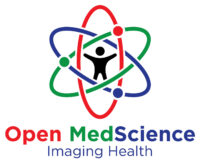Sustainable Medical Imaging
Medical imaging is an essential tool in modern healthcare, allowing for accurate diagnosis, monitoring of diseases, and guidance during treatments. However, like many aspects of healthcare, it has a significant environmental footprint. The energy consumption of imaging equipment, the use of non-renewable resources, and the production of medical waste all contribute to sustainability concerns. Addressing these issues is crucial to reducing the environmental impact of medical imaging while maintaining high-quality patient care.
Energy Consumption
Medical imaging devices, particularly MRI and CT scanners, consume large amounts of electricity. An MRI scanner, for instance, requires continuous cooling to maintain superconducting magnets, leading to significant energy use even when not actively scanning. CT scanners also demand high power during operation, contributing to the carbon footprint of hospitals and imaging centres.
Energy-efficient imaging systems are being developed to improve sustainability. Manufacturers are working on MRI systems with lower power requirements and helium-saving technologies, as helium is a finite resource essential for cooling. Additionally, hospitals are implementing smart scheduling to reduce idle time and unnecessary scans, ensuring machines are used efficiently.
Equipment Longevity and Resource Use
Medical imaging devices contain valuable materials such as rare earth metals, which are difficult to mine and refine sustainably. Extending the lifespan of imaging equipment through maintenance, software upgrades, and refurbishing can reduce the need for new devices, lowering overall resource consumption. Some hospitals are adopting circular economy principles, where older machines are refurbished and reused rather than being discarded.
Efforts are also being made to improve the recyclability of imaging components. Manufacturers are designing scanners with modular parts that can be easily replaced or repurposed, reducing electronic waste. Additionally, advances in digital imaging and cloud-based storage help minimise the need for physical materials such as films and CDs, which were previously used for storing and sharing images.
Radiation Dose Optimisation
X-ray and CT imaging involve ionising radiation, which, if used excessively, can pose risks to patients. Optimising imaging protocols to use the lowest effective radiation dose not only improves patient safety but also reduces the energy required for each scan. The development of AI-assisted imaging techniques is helping radiologists obtain high-quality images with lower radiation levels, contributing to both sustainability and patient care.
Waste Reduction in Imaging Practices
Medical imaging generates waste in the form of contrast agents, single-use plastics, and electronic components. Sustainable alternatives, such as biodegradable contrast agents and reusable imaging accessories, are being explored. Hospitals are also improving waste management strategies, ensuring hazardous materials are disposed of properly while recycling as much as possible.
Future Directions
Sustainable medical imaging requires collaboration between healthcare providers, researchers, and industry leaders. By prioritising energy efficiency, extending equipment life, and reducing waste, the environmental impact of imaging can be minimised. Integrating sustainability into medical imaging practices will help create a more environmentally responsible healthcare system without compromising patient outcomes.
You are here:
home » Sustainable Medical Imaging





